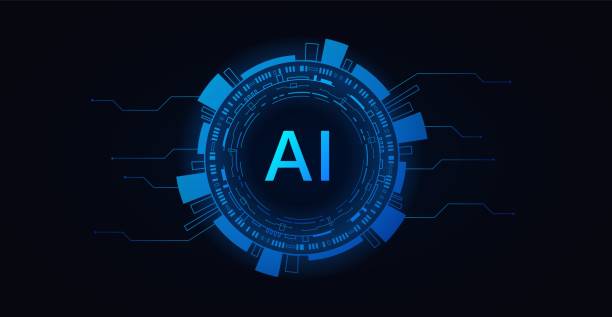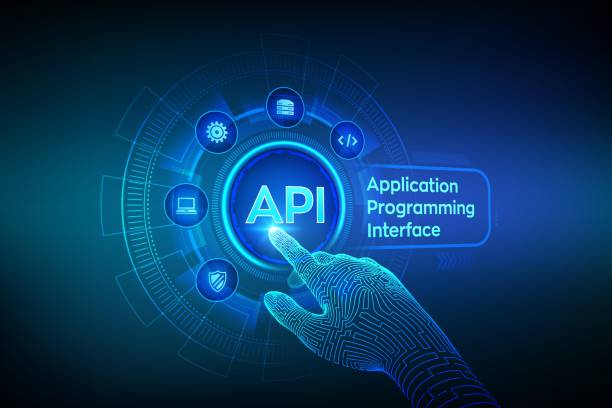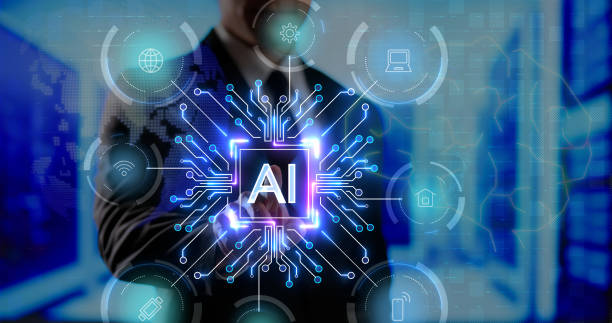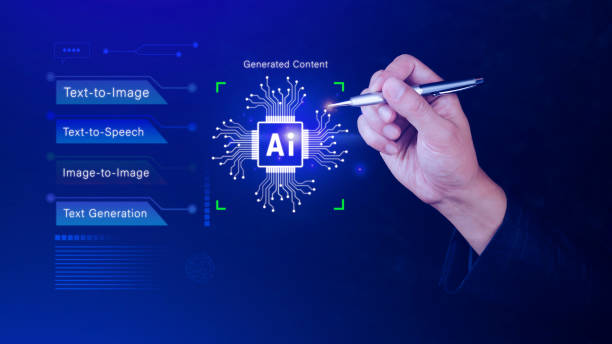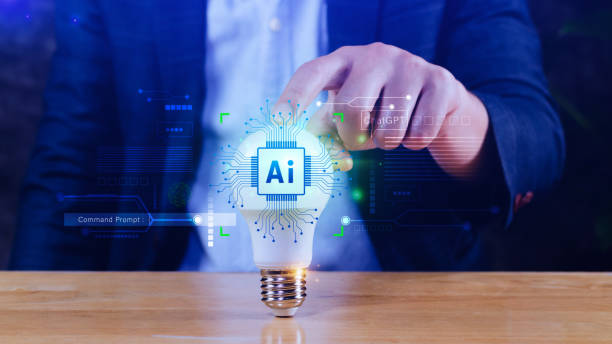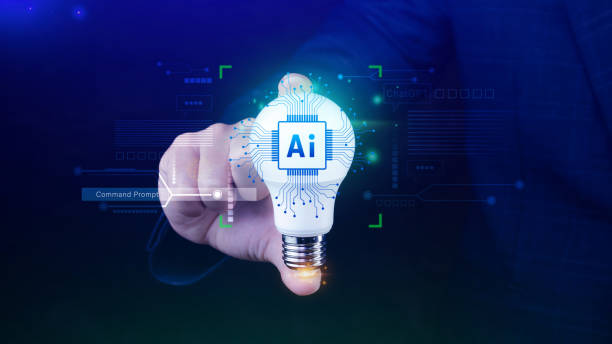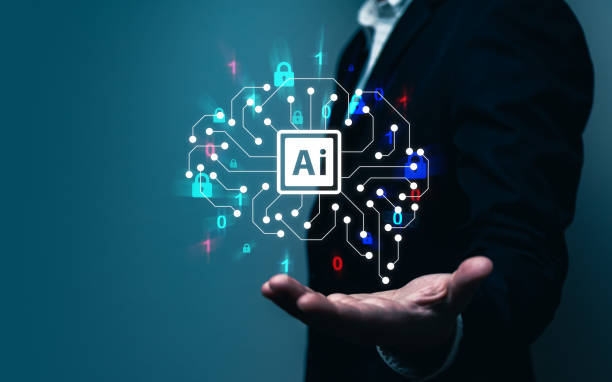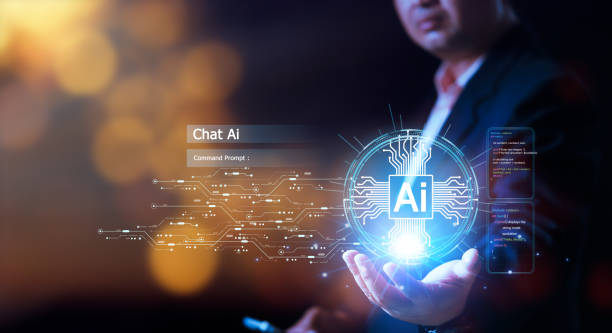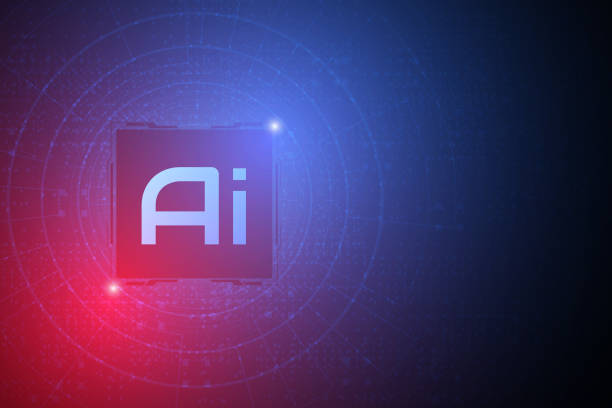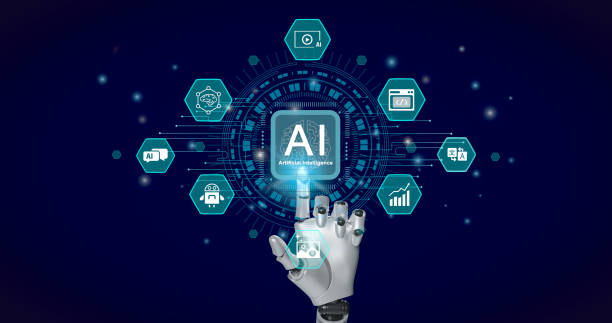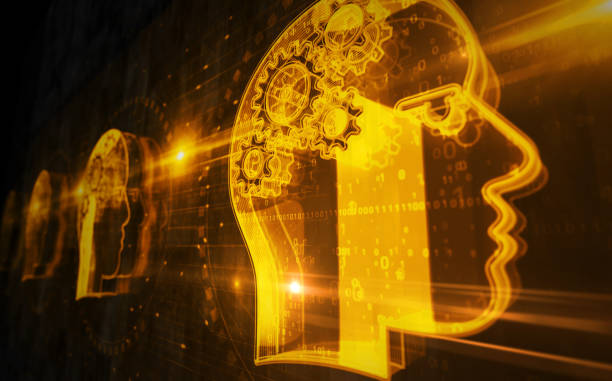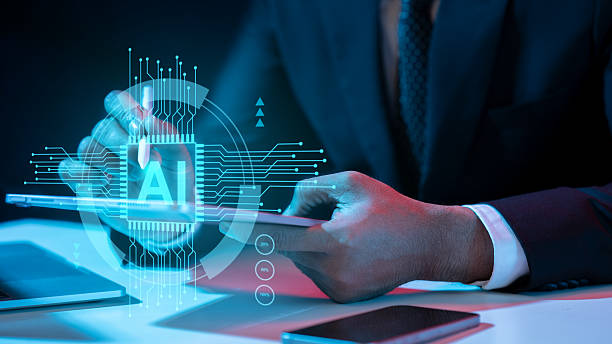Familiarity with the Concept of AI Robot: Definition, History, and Applications
What is an AI Robot?
#AI_Robot is a combination of two distinct fields: robotics and artificial intelligence.
Generally, a robot is a machine capable of performing a series of complex tasks automatically.
On the other hand, Artificial Intelligence (AI) is a branch of computer science that deals with building machines capable of mimicking intelligent human behavior.
When these two fields are combined, the result is robots that can learn, reason, make decisions, and interact with their environment in an intelligent manner.
The history of AI robots dates back decades.
Initially, robots were simple machines that operated based on precise programming and predetermined instructions.
With the advancement of AI, researchers began integrating machine learning algorithms and other intelligent techniques into robots.
This led to the creation of robots capable of learning from their experiences, adapting to new conditions, and performing complex tasks without the need for manual programming.
The applications of AI robots are vast and diverse.
These robots are used in various industries, including manufacturing, healthcare, customer service, education, and many other fields.
For example, in the manufacturing industry, AI robots can perform repetitive and dangerous tasks, increasing productivity.
In healthcare, these robots can assist surgeons in complex operations and aid doctors in diagnosing diseases.
In customer service, chatbot robots can answer customer questions and resolve their issues.
Do visitors leave your e-commerce site before making a purchase? Don’t worry anymore! With Rasaweb’s professional e-commerce website design services, permanently solve the problem of not converting visitors into customers!
✅ Significant increase in conversion rates and sales
✅ Unique and engaging user experience
⚡ Contact us now for a free consultation!
Main Components of an AI Robot: Sensors, Processors, and Actuators
Introduction to Main Components
An AI robot consists of three main components: sensors, processors, and actuators.
Sensors are responsible for collecting information from the surrounding environment.
This information can include visual data (images and videos), audio data, tactile data, motion data, and other types of data.
Sensors help the robot understand its environment and react to its changes.
Click here to preview your posts with PRO themes ››
Processors are the thinking brain of the robot.
They process the data collected by sensors and decide how the robot should act.
Processors typically use AI algorithms such as machine learning, neural networks, and natural language processing to analyze data and identify patterns.
Actuators are components that allow the robot to interact with its environment.
Actuators can include motors, arms, hands, wheels, speakers, displays, and other components that enable the robot to move, manipulate objects, produce sound, display information, and so on.
For a better understanding of this topic, refer to the article Artificial Intelligence on Wikipedia.
Key AI Algorithms Used in Robots: Machine Learning, Neural Networks, and Natural Language Processing
Overview of AI Algorithms
AI algorithms play a crucial role in the performance of AI robots.
The three key algorithms widely used in these robots are machine learning, neural networks, and natural language processing.
Machine Learning allows robots to learn from data and improve their performance without the need for manual programming.
Machine learning algorithms can be used for various tasks, including pattern recognition, outcome prediction, data classification, and decision-making.
Neural Networks are computational models inspired by the structure of the human brain.
These networks consist of numerous interconnected nodes (neurons) that can process information.
Neural networks are highly effective for tasks such as image recognition, speech recognition, natural language processing, and robot control.
Natural Language Processing allows robots to understand human language and interact with it.
Natural language processing algorithms can be used for tasks such as language translation, sentiment analysis, question answering, and text generation.
| Algorithm | Applications in AI Robots |
|---|---|
| Machine Learning | Pattern recognition, outcome prediction, data classification |
| Neural Networks | Image recognition, speech recognition, natural language processing |
| Natural Language Processing | Language translation, sentiment analysis, question answering |
Applications of AI Robots in Various Industries: Manufacturing, Healthcare, Customer Service, and Beyond
Exploring Diverse Applications
As previously mentioned, AI robots have widespread applications in various industries.
In the manufacturing industry, these robots can perform repetitive and dangerous tasks, improve product quality, and reduce costs.
For example, automated welding robots can create precise and high-quality welds, and quality inspection robots can accurately and quickly inspect products.
In healthcare, AI robots can assist surgeons in complex operations, accurately deliver medications, improve patient care, and aid doctors in diagnosing diseases.
For example, surgical robots can perform minimally invasive surgeries with greater precision, and medication delivery robots can deliver medications to patients at the appropriate time.
AI Robot
In customer service, chatbot robots can answer customer questions, resolve their issues, place orders, and provide information about products and services.
These robots can be available 24/7, helping customers quickly and easily get their answers.
You can find more information in the article AI Ethics.
Does your current e-commerce website design not generate the expected sales?
Rasaweb is a specialist in professional e-commerce website design!
✅ An attractive and user-friendly site aimed at increasing sales
✅ High speed and security for an ideal shopping experience⚡ Get a free online store design consultation with Rasaweb!
Pros and Cons of Using AI Robots: Increased Productivity, Reduced Costs, Ethical Challenges, and Security Issues
Analyzing Strengths and Weaknesses
The use of AI robots has many advantages.
These robots can increase productivity, reduce costs, improve the quality of products and services, and minimize human errors.
Additionally, AI robots can perform dangerous and repetitive tasks, freeing humans from these duties.
However, the use of AI robots also has disadvantages.
One of the most important disadvantages is ethical challenges.
For example, questions arise regarding the accountability of robots in case of errors, bias in AI algorithms, and data privacy.
Security issues are another disadvantage of using AI robots.
Robots can be targeted by cyberattacks, and their information can be stolen.
Additionally, robots can be used for malicious purposes such as espionage and sabotage.
The Future of AI Robots: Technological Advancements, Social and Economic Impacts
A Look into the Future
The future of AI robots is very bright and promising.
Technological advancements in fields such as deep learning, machine vision, and natural language processing will lead to the creation of smarter, more capable, and more versatile robots.
The social and economic impacts of AI robots will also be extensive.
These robots can create new jobs, increase productivity, improve quality of life, and help solve global problems such as climate change and resource scarcity.
Simply put, an AI robot is a machine that thinks.
However, ethical challenges and security issues must also be addressed, and solutions to deal with them should be provided.
Education plays a significant role in preparing society for the adoption of AI robots.
Individuals need to become familiar with this technology and acquire the necessary skills to work with robots.
How to Choose an AI Robot: Key Tips for Selecting the Right Robot
Selection Guide
Choosing the right AI robot depends on your needs and goals.
Before purchasing a robot, you should carefully review your needs and select a robot that can best meet them.
Some key considerations when choosing an AI robot include the type of tasks the robot needs to perform, the robot’s level of intelligence, the robot’s price, its reliability, ease of use, and the technical support provided by the manufacturer.
Also, keep in mind that AI robots are constantly evolving.
Before purchasing a robot, it’s best to do sufficient research and be aware of the latest models and technologies available in the market.
An AI robot is a powerful tool.
| Feature | Description |
|---|---|
| Type of Tasks | Tasks the robot needs to perform (manufacturing, services, etc.) |
| Level of Intelligence | Robot’s ability to learn and make decisions |
| Price | Cost of purchasing and maintaining the robot |
| Reliability | Robot’s stability and correct functioning |
| Ease of Use | How easy it is for users to operate the robot |
Ethical Considerations in the Development and Use of AI Robots: Accountability, Bias, and Privacy Protection
Ethics in Artificial Intelligence
The development and use of AI robots come with important ethical considerations.
One of the most crucial of these is accountability.
If an AI robot makes a mistake, who will be responsible? The robot’s manufacturer, the robot’s user, or the robot itself?
Bias is another important ethical consideration.
AI algorithms can be discriminatory based on the data they have been trained on.
For example, a facial recognition algorithm might have lower accuracy in recognizing faces of individuals with darker skin tones.
Privacy protection is also another important ethical consideration.
AI robots can collect a lot of information about users.
This information must be securely stored and should not be shared with others without users’ consent.
An AI robot requires its developers.
Does your current e-commerce website design lead to losing customers and sales?
Rasaweb is your solution with modern and user-friendly e-commerce website designs!
✅ Significant increase in conversion rates and sales
✅ Strong branding and building customer trust
⚡ Get a free e-commerce website design consultation from Rasaweb!
Security Issues in AI Robots: Data Protection, Counteracting Cyberattacks, and Preventing Malicious Use
Security in Artificial Intelligence
AI robots can be targeted by cyberattacks, and their information can be stolen.
Additionally, robots can be used for malicious purposes such as espionage and sabotage.
Therefore, protecting data, counteracting cyberattacks, and preventing the malicious use of AI robots are of paramount importance.
To protect data, strong encryption methods should be used, and access to data should be restricted.
To counteract cyberattacks, powerful security software should be utilized, and systems should be continuously updated.
To prevent the malicious use of AI robots, laws should be enacted to prohibit the use of these robots for illegal purposes.
One solution for enhanced security could be the use of blockchain technology.
How to Work with AI Robots: Training and Resources for Effective Learning and Use
Effective Learning and Use
To effectively use an AI robot, you need to become familiar with this technology and acquire the necessary skills to work with robots.
There are many educational resources available for learning about AI robots.
You can enroll in online courses, read relevant books and articles, and utilize specialized websites and blogs.
Furthermore, you can gain experience and improve your skills by participating in practical projects.
For example, you can build a simple robot and program it to perform a specific task.
AI robots open up a new world of possibilities for us.
Through learning and practice, you can become a skilled AI robot user and utilize this technology in various fields.
AI Robot
Frequently Asked Questions
| No. | Question | Answer |
|---|---|---|
| 1 | What is an AI robot? | An AI robot is a machine capable of understanding, reasoning, learning, and problem-solving, and can perform complex tasks with relative autonomy. |
| 2 | What are the most important applications of AI robots? | Key applications include industrial manufacturing, customer service (chatbots), medicine and surgery, autonomous transportation, space exploration, and military affairs. |
| 3 | What is the main difference between an AI robot and a regular robot? | A regular robot only follows programmed instructions, whereas an AI robot can learn from data, make decisions, and adapt to new environments. |
| 4 | How do AI robots learn? | They learn through machine learning algorithms (such as deep learning, reinforcement learning) and by processing vast amounts of data, identifying patterns, and improving their performance. |
| 5 | Can AI robots have emotions? | Currently, AI robots do not possess real emotions in the human sense. They can mimic or detect emotions, but they do not understand or experience them. |
| 6 | What are the current limitations of AI robots? | Limitations include the need for large amounts of data, inability to understand abstract concepts, lack of true creativity, ethical issues, and generalization challenges in new environments. |
| 7 | What is the role of AI in the development of humanoid robots? | AI helps humanoid robots to walk, maintain balance, understand their surroundings, interact with humans, and perform complex tasks. |
| 8 | How is the future of AI robots predicted? | It is predicted that AI robots will become smarter, more autonomous, and capable of performing more complex tasks in daily life and industry, and their interaction with humans will increase. |
| 9 | Can AI robots replace all human jobs? | It is unlikely that all human jobs will be replaced. Robots will take over many repetitive and dangerous tasks, but jobs requiring creativity, empathy, and ethical judgment will remain. |
| 10 | What ethical and social challenges arise with the expansion of AI robots? | Challenges include issues related to privacy, data security, ethical decision-making by robots, impact on employment, and accountability in case of errors. |
And other services of Rasa Web Advertising Agency in the field of advertising
- Smart Marketing Automation: A novel service to increase click-through rates through attractive UI design.
- Smart UI/UX: A combination of creativity and technology for digital branding by using real data.
- Smart Marketplace: A professional solution for campaign management with a focus on precise audience targeting.
- Smart Brand Identity: Designed for businesses seeking digital branding by using real data.
- Smart Link Building: Professional optimization for campaign management using attractive UI design.
And over hundreds of other services in internet advertising, advertising consultation, and organizational solutions
Internet Advertising | Advertising Strategy | Advertorials
Resources
- Comprehensive Guide to AI Robots on Digiato
- Tutorial on Working with AI Robots on Virgool
- Applications of AI Robots on Zoomit
- The Future of AI Robots from ISNA’s Perspective
? With Rasaweb Afarin Digital Marketing Agency’s services, see your business at the peak of competitiveness. From custom website design and SEO to targeted advertising campaigns, we offer comprehensive solutions for your growth and success. To learn more about our services and get a consultation, contact Rasaweb Afarin’s expert team today and build your digital future.
📍 Tehran, Mirdamad Street, next to Central Bank, Kazeroon Southern Alley, Ramin Alley, No. 6

